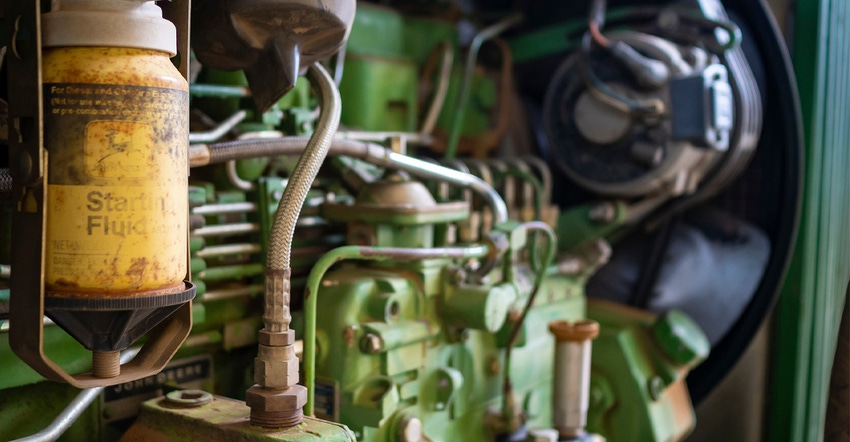
With colder weather just around the corner, many farmers and ranchers are preparing to store machinery for the winter. Rodents will be eyeing that same machinery for another reason — as a cozy place to shelter for a few months.
“There are dozens of nooks and crannies under the hood of a piece of farm machinery that are attractive to many rodent species,” said Kevin Shelton, Oklahoma State University Extension associate specialist and coordinator of OSU’s Pesticide Safety Education Program. “However, the last thing you want to do is provide an efficiency apartment to these rodents for the winter. The wiring harness is appealing and is a readily available chew toy, which will cause lots of problems next spring.”
Shelton said the easiest thing to do to deter rodents is to simply raise the hood while machinery is stored in a barn or shed. This allows light in and makes the engine compartment less attractive. However, this may not be appropriate for outside storage due to rain, wind and snow.
Baits and traps also are options in developing a control program. Tips include:
Snap traps are one of the oldest types of traps and usually provide a quick death to the rodent. Mice typically have small territories, so traps must be placed within their range to be effective. They can be placed under a vehicle hood and inside the cab and glove box. Be sure to place snap traps where pets don’t have access.
Live-catch traps are rodent stations that can be baited with a food attractant or rodenticide. Some may have snap traps or glue boards inside.
Because rodents are naturally inquisitive, sticky traps or glue boards work well.
Mice are nibblers, so putting a little bait in several bait stations will help increase consumption. Use several kinds of bait until a preference is detected, then use that one until feeding stops. Always use an enclosed bait station, and never place them where children or pets can have access.
“While application of toxic baits is a viable method of rodent control, it’s important for people to be aware of where they are baiting and with what,” Shelton said. “Avoid placing baits where non-target animals are likely to come in contact.”
Natural predators are playing their own part in pest control as well. Snakes, both venomous and non-venomous, house and barn cats, foxes and bobcats are effective rodent killers. So are birds such as hawks, owls and even roadrunners.
“It won’t be long until rodents are looking for a new home for the winter. Keeping these tips in mind will help ensure your equipment is in good shape when spring rolls around,” he said.
Source: is OSU, which is solely responsible for the information provided and is wholly owned by the source. Informa Business Media and all its subsidiaries are not responsible for any of the content contained in this information asset.
Read more about:
Rodent ControlAbout the Author(s)
You May Also Like






